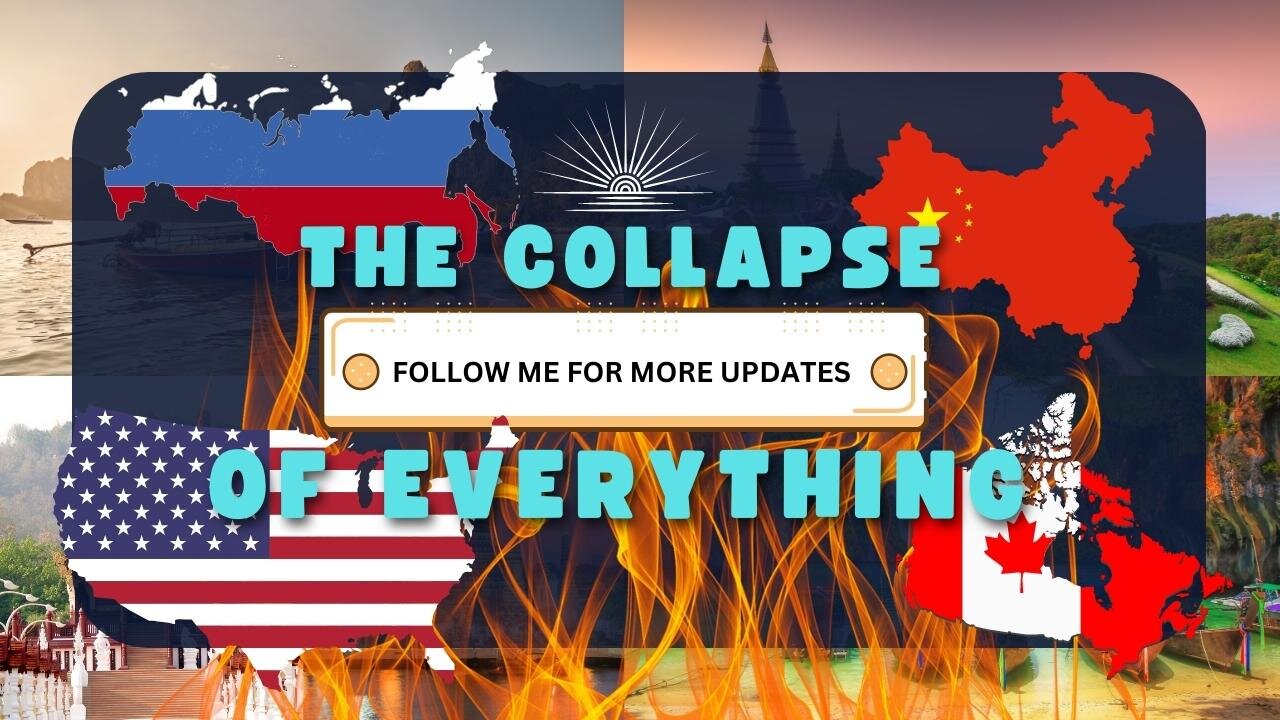Premium Only Content

We Are Living Through The Scariest Economic Experiment In History Right Now...And No One Knows It
Many countries around the world have, on paper...seemingly recovered from the economic collapse that occurred last year.
Unemployment rates are getting closer to normal, the number of business bankruptcies has hit a 2 year low, and the stock market is at an all time high?
On the surface, this seems great. But in reality, we are actually going through the biggest and scariest economic experiment in history. An experiment which could help bring us into a golden age of a new kind of economy...or it could bring us into a new dark age that the world has never seen before.
In the 7th century in China, copper coins were used as the main currency for chinese merchants. But these merchants at the time, began running into a problem.
You see, these coins were quite heavy and many of them could be used for a single transaction, which was quite inconvenient for carrying around a city.
So to combat this problem, Chinese merchants came up with the idea. What if they just deposited these heavy coins with a person or business, and received a piece of paper called, a promissory note, or banknote, in return? That way merchants would not have to carry around large amounts of heavy coins all day, and they can be safely stored at a single location.
And thus the primitive form of paper money was born, and was implemented throughout the currency system in China.
After a few centuries of using this type of currency system, the Chinese government noticed something strange.You see, a copper shortage caused the government to issue more of these promissory notes and less copper coins.
And during this time, the government saw a massive boost to its economy, allowing for the government to spend more on things like military and infrastructure.
So, they ran an economic experiment that would become very important to what we are experiencing today.
The chinese government declared that their new form of paper currency, was considered a public monopoly owned by the government. This allowed the ancient chinese government to completely control its own currency.
And for a couple hundred years, the governments ability to print money on command, and control inflation, worked well. But little did they know, a global threat was emerging out of central asia, that would change the course of history.
A man named Temujin had recently united the Mongol Tribes in the year 1206, and then became known as Genghis Khan. He soon launched the largest military conquest in human history, with his successors eventually taking over China and forming the yuan dynasty in 1271.
During the Yuan Dynasty, the newly formed Chinese/Mongol government wanted to keep spending government money to further fund their conquests. But instead of limiting their spending, or worrying about their government debt, they decided to just manufacture more and more paper money, in order to fund their military campaigns. They figured that because they were the government and had a public monopoly on its currency, they could do whatever they wanted with little or no repercussions. So they essentially revamped their paper money, turned it into the worlds first fiat currency, and started running their empire on a completely new economic theory.
And for a little while it worked.
But after years war in Japan, Vietnam, Burma, and Java, and years of ignoring debt and inflation, the economy of the Yuan Dynasty began to collapse.
Inflation rose to 80% in the early 1300’s, their was a severe debt crisis, the population became impoverished within the span of about 5 years, and the governments theory on how printing money could solve their economic problems came crashing down.
And it was this economic downfall combined with the governments inability to help its people after several natural disasters, that led to the collapse of the yuan dynasty in 1370.
One such experiment that is being closely watched by economists and financial experts is the use of unprecedented levels of monetary stimulus by central banks around the world. This has included the deployment of negative interest rates, the printing of large amounts of money, and the purchasing of government bonds and other assets on a massive scale. The goal of these actions is to boost economic growth and mitigate the effects of the COVID-19 pandemic, but they have also raised concerns about the long-term consequences of these policies.
-
 2:10:15
2:10:15
Benny Johnson
3 hours ago🚨 AOC Going to JAIL For Leaking ICE Raid!? Trump to END Military Aid to Ukraine After WH Boss Move
126K134 -
 1:01:27
1:01:27
Grant Stinchfield
2 hours ago $2.02 earnedThe Real Story Behind the War in Ukraine
20.2K2 -
 1:05:36
1:05:36
The Rubin Report
4 hours agoTrump & Zelenskyy’s First Reactions to Disastrous Meeting
83.8K38 -
 2:02:45
2:02:45
Steven Crowder
5 hours agoShould Trump Ditch Free-riding NATO After Zelensky Blowup?
490K302 -
 2:00:26
2:00:26
LFA TV
1 day agoWALK AWAY FROM UKRAINE! | LIVE FROM AMERICA 3.3.25 11AM
70.3K36 -

Flyover Conservatives
22 hours agoTucker, Sachs & the Truth About Zelensky That Changed Everything. Maine Transgender Protest. Kieran Culkin’s Viral Oscars Moment. | FOC Show
35K3 -
 1:04:41
1:04:41
Timcast
4 hours agoUK Vows To Deploy TROOPS Into Ukraine, Democrats CHANT WAR After Trump ROASTED Zelenskyy | Timcast
102K139 -
 LIVE
LIVE
Bannons War Room
13 days agoWarRoom Live
3,684 watching -
 1:11:57
1:11:57
The Big Mig™
16 hours agoPresident Trump, In Crypto We Trust
26.5K2 -
 1:39:26
1:39:26
Caleb Hammer
4 hours agoGold Digger Keeps Destroying This Mans Life | Financial Audit
40.3K5